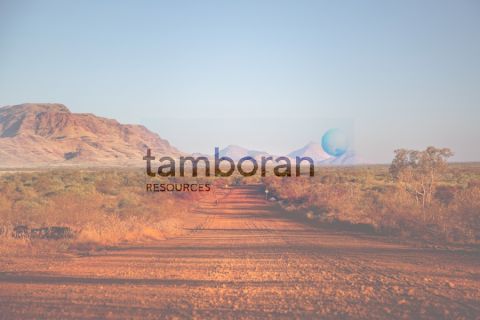The US has been moving oil out of the Arctic region since the Trans-Alaska Pipeline System was completed in 1977. Both the US and Canada have done extensive offshore drilling in the Arctic. Even with that experience, there is wisdom in having the willpower to show restraint. Recent actions by the US government and major companies seeking oil and gas pay in the Alaskan Arctic showed that voyages are proving to be more of a marathon instead of a sprint with plenty of breaks in between. So far, Shell, Statoil, and ConocoPhillips have temporarily halted plans to drill in the Alaskan Arctic. Their actions come amid regulations from government officials, who have identified principles and prerequisites for safe offshore drilling in an effort to avoid any accidents and negative impacts on the area’s fragile ecosystem. The Exxon Valdez oil spill showed how much damage can be done when something goes wrong in an ice-free environment. That spill occurred in Prince Rupert Sound, which is a long way from where the new drilling projects will be operating in ice-filled waters. The federal government is being extremely cautious as it enforces rules and encourages companies to work together to create an Arctic-specific model for offshore exploration, covering drilling and maritime safety as well as emergency response equipment. The industry, in turn, has responded positively as they stop plans to make sure operations are up to par or pause “given the uncertainties of evolving federal regulatory requirements and operational permitting standards.” ConocoPhillips has agreed to work with others in the industry and the government to develop the Arctic-specific model for offshore oil and gas operations. And some companies, including Shell, are learning from past mistakes and improving plans. In response to the Kulluk drilling ship running aground, Shell Upstream Americas Director Marvin Odum said in the company’s sustainability report that “Certainly we will identify and understand the ‘how’ and ‘why’ of all aspects of the incident, and use the lessons learned to improve our operations in the future.” As those involved and others know, the stakes are high in the Arctic. The payoff can be high, considering about 22% of the world’s undiscovered conventional oil and gas could be in the Arctic. But the risks also are high. The Arctic’s harsh conditions, including shifting sea ice and icepacks, can impede E&P or shipping operations. Moreover, the fact that drilling locations are long distances away from the coast also could hamper response and restoration efforts. Companies’ drilling plans must take these, among a slew of other challenges and obstacles, into consideration. Shell calls its plans, which have been approved by US federal government agencies, “unprecedented.” Plans include use of BOPs to seal off wells, with capping stacks modeled after the one that stopped the blowout of the Macondo well in the Gulf of Mexico. Shell also has buried pipelines several meters below the seabed to avoid potential damage from floating ice. Detection systems also monitor any drop in pressure, activating valve systems to halt oil flow, according to the company’s website. The company also will have an onsite, a near-shore, and an onshore oilfield response system that is Arctic built. After learning that Statoil and ConocoPhillips decided to shelve their Arctic drilling plans, Greenpeace International Arctic campaigner Ben Ayliffe called the decisions “an admission that the oil industry is still not capable of meeting the enormous challenges posed by operating in the world’s most extreme environment.” On the contrary, the industry has shown that it is capable of operating in the Arctic. Shell has been operating offshore Alaska for decades, having safely drilled many wells in the Beaufort and Chukchi seas during the 1980s. Statoil also has extensive operations with decades of experience in Arctic areas. So history has shown that drilling can be done safely in the Arctic region. But the increased scrutiny by the government and groups like Greenpeace is a good thing. Odum had a good response when he addressed the attention by environmental groups, saying, “Close scrutiny of our industry helps raise broader public awareness of the energy and environmental dilemmas the world faces. It can help shape government policies for the better, and it can help raise operational standards across the board.” I agree with those words, and so far, it has proven to be true in the Gulf of Mexico, and hopefully, will do the same in the Arctic. Contact the author, Velda Addison, at vaddison@hartenergy.com.
Recommended Reading
U.S. Shale-catters to IPO Australian Shale Explorer on NYSE
2024-05-04 - Tamboran Resources Corp. is majority owned by Permian wildcatter Bryan Sheffield and chaired by Haynesville and Eagle Ford discovery co-leader Dick Stoneburner.
Permian Surface-owner LandBridge to Raise up to $367MM in IPO
2024-06-17 - Houston-based LandBridge holds some 220,000 surface acres in the Delaware Basin.
Scott Sheffield Among Investors in Australian Shale Gas IPO
2024-06-27 - The operator who sold Pioneer Natural Resources Co. to Exxon Mobil in May for $59.5 billion joins his son Bryan Sheffield in shale gas investment Down Under.
Riley Permian Increases Stake in West Texas Power JV with Conduit
2024-05-22 - Riley Exploration Permian increased its ownership in RPC Power, a JV with Conduit Power, to 50% from 35% and has agreed to sell up to 10 MMcf/d of natural gas as feedstock supply for the generation facilities as RPC plans to sell to ERCOT.
Solaris Stock Jumps 40% On $200MM Acquisition of Distributed Power Provider
2024-07-11 - With the acquisition of distributed power provider Mobile Energy Rentals, oilfield services player Solaris sees opportunity to grow in industries outside of the oil patch—data centers, in particular.





